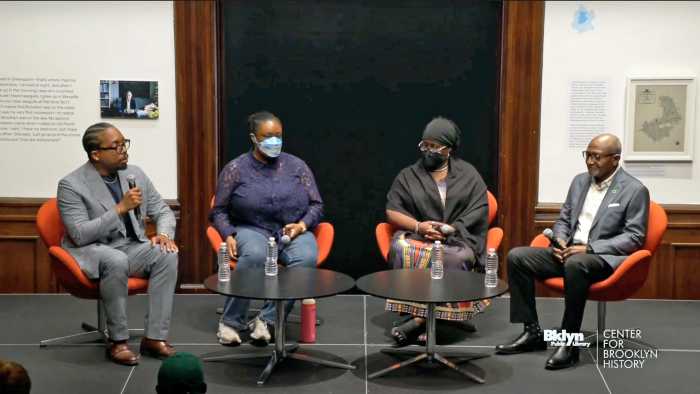Brooklyn Borough President Eric L. Adams on Thursday released his administration’s report grading the technology capabilities of Brooklyn schools.
The report details areas in which Adams calls on the City to increase investment in infrastructure and teacher resources in order to fulfil Mayor Bill de Blasio’s vision of “Computer Science for All.”
Adams’ announcement comes during Computer Science Education Week, for which his “Code Brooklyn” initiative has coordinated more than 300 schools to participate in the Hour of Code global education movement.
Adams first presented the report inside an outdated computer lab at the Conselyea Preparatory School in Williamsburg.
Adams thinks that the school is “emblematic of the obstacles and opportunities facing the City in making its public schools a national leader in computer science education,” according to a statement from the Office of the Brooklyn Borough President.
“So many of our educators are doing an amazing job, and it is our job to make sure they have the necessary tools to prepare these students for the world in which they are going to live and work,” Adams said.
“This report is in line with Mayor de Blasio’s call for ‘Computer Science for All’. Now, it’s time for our school system to catch up with that call,” he added. “It can’t merely be verbalized; it has to be actualized by looking at the upgrades that are needed. You cannot surf the Internet if you cannot sign on to the Internet.
“If we cannot allow our children to have first-class computer equipment in a first-class city, they’re not going to be prepared to be employed at a first-rate corporation,” Adams continued. “We cannot have a digital divide in our borough and in our city.
“This report is a wake-up call,” he said. “We monitor our students year by year with a report card; this is our technology report card, and we cannot have another year where any school is failing.”
The mission for Mayor de Blasio’s “Computer Science for All” initiative states that “by 2025, every public school student in New York City will learn computer science.”
Adams said he aims to augment that effort through Code Brooklyn, which he launched in November 2015, with the goal of giving every public school student in Brooklyn the opportunity of learning how to code.
One of the key prongs of his plan is analyzing the infrastructure needs in Brooklyn schools.
It pertains to the schools’ ability to support robust computer science programming, including the availability of STEM labs, smartboards, computer carts, general wiring, and wifi capability.
The results of that assessment have led to this report, populated by the responses of more than 130 schools across the borough, according to Adams.
He said this represents about 100,000 Brooklyn students at every grade school.
Adams’ report, which can be accessed online by visiting his website at brook
Survey results indicated that there are sufficient laptops for about 20 percent of those students and enough tablets for about seven percent of Brooklyn students.
Brooklyn schools as a whole rated their wifi access at 3.23 on a scale of one to five.
Thirty percent of respondent schools use an established computer science curriculum, and 54 percent of school responses indicated the presence of a trained teacher who teaches or could teach computer science, according to the survey.



























